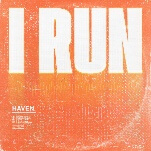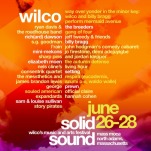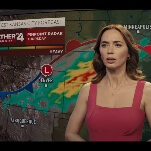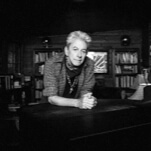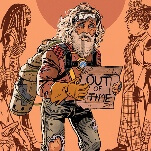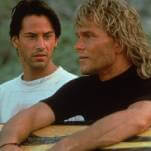Written Entirely In 3D Case File #184: Drive Angry 3D
I generally like to wait until history has rendered a verdict on a film before writing it up for My Year Of Flops. Every once in a while, however, I encounter a flop so irresistible, so intrinsically fascinating, and so utterly unreal that I swoop in like a vulture eying ripe carrion and write it up while it’s still in theaters. Sometimes I don’t want to wait for a cultural consensus to form; I want in and I want in now. Fuck delaying gratification. Southland Tales was such a film. Speed Racer was another. So was Delgo. And in 2011, no film had my great-bad movie sensors flashing as wildly as Drive Angry, or Drive Angry: Shot In 3D as I prefer to call it. I couldn’t imagine a more promising combination of title and actor than Nicolas Cage and Drive Angry.
Some actors make questionable choices in film. Cage makes choices symptomatic of profound mental illness. Starring in Season Of The Witch, The Wicker Man, and Bangkok Dangerous are less iffy choices than grounds for institutionalization. That’s the grand gestalt of Cage: The craziness of his real life and the lunacy of his cinematic existence bleed into each other until they’re impossible to separate. Is it Cage that has a lucky crack pipe and hates to see dead souls dance, or his character in Bad Lieutenant: Port Of Call New Orleans? Did the Elvis-worshipping ex-con Cage played in Wild At Heart marry the King’s daughter, or does that distinction belong to Elvis acolyte Cage himself? Cage commits to his roles so completely that I’m surprised he didn’t commit suicide before filming Drive Angry just to see if he could escape hell and return to earth to drink beer from a skull, avenge some shit, and kill a whole bunch of motherfuckers like his character does. We need Cage to be crazy in real life, or else the lunacy of his performances would feel inauthentic. We need to believe that Cage is the same larger-than-life lunatic onscreen and off so that we can live vicariously through his travails, through doomed marriages to the scions of famous families, castle-buying sprees, and other celebrity craziness.
My quest to find a professional excuse to see Drive Angry attained a new urgency when Paul Scheer and his co-hosts June Diane Raphael and Jason Mantzoukas spent an extraordinarily enjoyable episode of their How Did This Get Made? podcast snorting ecstatically over the 6 or 7 million things in Drive Angry that make no sense—basically everything between the opening and closing credits. If you like My Year Of Flops, I suspect you’ll love How Did This Get Made. At the risk of flattering myself and insulting the podcast, I feel they share an eagerness to see the good, or at least the awesome, in even the most ridiculous shit.
How Did This Get Made’s lively banter made Drive Angry sound like the kind of film that shouldn’t exist yet inexplicably does. Those are exactly the kind of films I like to honor here at My Year Of Flops. So I marched to the theater, paid my $15 dollars ($15!), and sat down with a box of popcorn and a giant cup of Cherry Coke alongside, at most, four other moviegoers to experience the Satanic majesty of what I was convinced would be the most awesome movie ever. Others disagreed.
Even in the dead of winter, with little in the way of competition, Drive Angry still finished ninth in its opening weekend (despite the inflated ticket prices of 3D), and received mixed to “This film heralds the downfall of civilization”-level reviews. According to Nikki Finke of Deadline—who is only wrong 30 to 40 percent of the time—that’s enough to make it the lowest-grossing 3D opening of all time (not including The Nutcracker In 3D, which opened in limited release). So while How Did This Get Made? and My Year Of Flops looked at Drive Angry and squealed “Fuck yeah,” the rest of the world meekly suggested, “Eh, is there at least another National Treasure sequel in the works?”
When it comes to doling out information to audiences, Drive Angry operates on a strictly need-to-know basis. So if you’d like to know exactly how one goes about escaping the bowels of hell, you won’t find answers here. We’re simply informed that some badass motherfuckers think they can outrun fate forever only to discover, in the film’s immortal words, “badass motherfuckers are never fast enough.” We then cut to Nicolas Cage killing a whole bunch of motherfuckers for reasons that are not immediately apparent. Cage is in an awful hurry for a good reason: He has only two days to keep his granddaughter from being sacrificed by a group of Satanists led by a fellow who looks like the frontman for a Doors tribute band. Cage brings the pain to a plethora of interchangeable bad guys before indulging in one of the signature clichés of ’80s action movies: walking away from a giant explosion in slow motion. Cue opening credits/awesomeness. That opening bit of badass motherfuckery might just represent the only time the movie slows down.
As the hosts of How Did This Get Made marveled, Cage is able to bust out of hell and kill a whole bunch of motherfuckers, but he nevertheless has to borrow the sweet-ass ride of Amber Heard to get to the abandoned prison where his granddaughter is being held. Otherwise he’d be forced to take a Greyhound, and nobody looks cool on a Greyhound. Heard plays a waitress in a sleazy diner, so she understandably has the survival instincts of a Navy Seal. It’s just one of the film’s many inspired sick jokes that Cage emerges from the bowels of hell only to end up somewhere much, much worse: the dregs of the American South.








